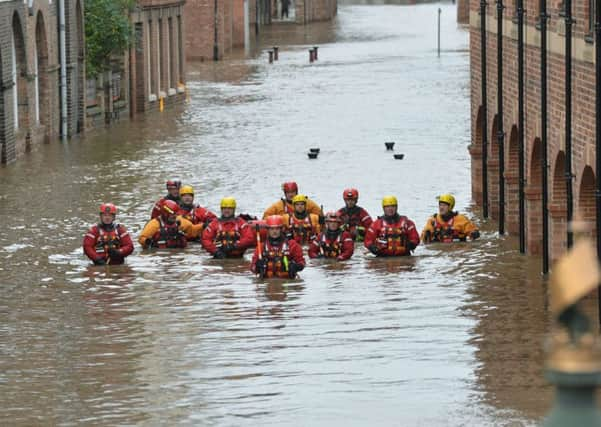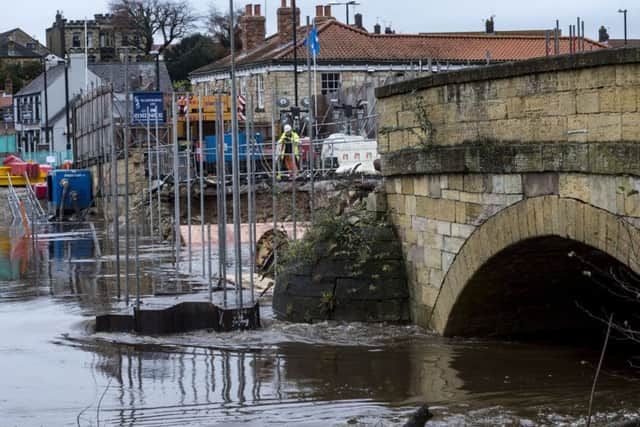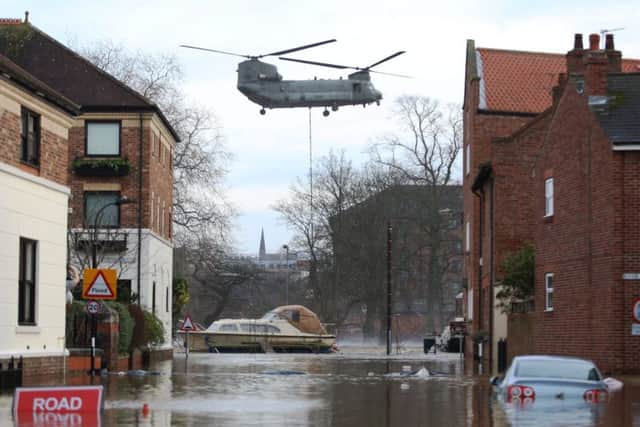Why Yorkshire is heading for flash flooding misery for decades to come


Weather forecasts for coming days and weeks are often treated with some scepticism at the best of times, so projections looking 82 years into the future are certain to raise some eyebrows. But a new scientific study from the Met Office has painted an alarming picture of the future for Yorkshire by 2100 – with the study’s approach set to inform political decisions on how to tackle climate change.
In the past few years, many thousands of people living in the region have experienced the devastation that flooding can bring, ruining homes and businesses in events like the Boxing Day floods of 2015 which caused misery across vast swathes of Yorkshire and saw Tadcaster literally split in two as its 18th Century Grade II-listed bridge collapsed in a moment that symbolised the destruction caused to the region over a terrible few days.
Advertisement
Hide AdAdvertisement
Hide AdUnfortunately, the new research suggests such scenes may become more commonplace in the years to come.


The new study looking at expected rainfall patterns across northern England and Scotland has given an indication of “potentially significant changes in rainfall patterns”.
Its experimental approach under what is known as the Met Office Unified Model has involved looking at predicted changes in hourly rainfall at kilometre scales, in a way that is not captured by traditional climate models.
The report, which has been published in the journal Climate Dynamics, suggests that if greenhouse gas emissions continue to grow from their current levels at an unmitigated rate – leading to averages temperatures rising by 4.3 Celsius compared to pre-industrial 19th Century levels – then average rainfall in winter months will increase in some areas by up to 35 per cent on what they are at the moment.
Advertisement
Hide AdAdvertisement
Hide AdIn contrast, summer daily average rainfall is projected to see large decreases across northern Britain, potentially falling by around half their current levels. But perhaps most alarmingly, the study projects that downpours in both summer and winter are likely to become more extreme, resulting in flash flooding becoming a more frequent phenomenon, especially during the summer months.


Not surprisingly given the length of time it is looking ahead, the report comes with considerable caveats – with the Met Office making clear the findings should not be regarded as formal predictions and should instead be seen as highlighting “plausible future changes from an experimental methodology”.
But while the results may not be as extreme as those suggested by this study, which builds on similar projections from the Met Office for southern England, it is clear our climate is changing. On current projections, even if greenhouse gases are “substantially reduced” in the coming years, best-case scenario predictions suggest global temperatures will rise by an average 1.6C by 2100 compared to where they stood before the Industrial Revolution.
Lizzie Kendon, manager of understanding regional climate change for the Met Office and co-author of the study, says that even if effective action is taken to mitigate greenhouse gas emissions, such rainfall events will still be more common than they are today. “The actual changes themselves won’t be different, it is just the size of the changes that would be different. The driving force is you have got more moisture in a warmer atmosphere.
Advertisement
Hide AdAdvertisement
Hide Ad“In the summer months, we are talking about there being less rainfall but when it does come, it is more intense.”
Steps have already been taken in some parts of Yorkshire to protect against future flood risk – but further work is required. In Sheffield, a £20m project to install more than 60 new flood protection measures, including flood gates and higher new walls, to the River Don between the Wicker and the M1 at Meadowhall was completed earlier this year in response to flooding in summer 2007 which resulted in a pensioner and a schoolboy drowning. But extra spending running into tens of millions of pounds is still required to install further flood defences at key points across the city. Sheffield’s vulnerability to flooding was highlighted in 2016 when HS2 boss David Higgins suggested it was the central reason it was decided not to build a dedicated high-speed railway station in the city centre.
Meanwhile, bosses the Elland-based firm The Flood Company, which designs flood mitigation products, told The Yorkshire Post earlier this year that with the frequency of problems being added to by increasing building on flood plains, businesses are increasingly demanding their services in a bid to protect their factories, offices and warehouses – with the problems of the 2015 Boxing Day floods causing many in Yorkshire to become more aware of the risks.
In February, the Environment Agency warned intense bouts of flooding are likely to become more frequent, with the warning following a pattern of severe flooding over the past ten years linked to an increase in extreme weather events as the country’s climate changes.
Advertisement
Hide AdAdvertisement
Hide AdMet Office records show that since 1910 there have been 17 record breaking rainfall months or seasons, with nine of them since 2000. As intense storms are becoming more frequent, sea levels are also rising because of climate change.
The findings of the new Met Office paper will now be built upon as part of what is known as the UK Climate Projections 2018 (UKCP18) project. It is intended scientists working on that scheme will look at both this study and a range of other potential outcomes before assessing how likely each one is to occur.
This information will then be used to inform the decisions of Government policy-makers and planners. The current set of projections in use dat back to 2009 but following the Paris Agreement on Climate Change in December 2015 for nations across the world to attempt to keep this century’s global temperature rise to “well below” 2C above pre-industrial levels, the Department of Environment, Food and Rural Affairs announced in January 2016 that the nation’s climate projections required a “major upgrade”.
Supported by £12m of Government funding, UKCP18 is using Met Office science and supercomputing capabilities, combined with the expertise of the Environment Agency and Defra, to further analyse the risks of climate change for this country.
Advertisement
Hide AdAdvertisement
Hide AdDr Kendon says it is not for her to say how the country should prepare for such potential weather events. “Our job is to provide the best information we can and then it is for policy-makers to make the decisions.”
But while further research is taking place to model the likelihood of different scenarios, Dr Kendon says that even on the most optimistic projections there will be “quite significant challenges for the future” to prepare for.
Millions of properties already at risk
More than five million properties in the UK are at risk of flooding – but many homeowners and renters aren’t fully aware of the dangers they are potentially facing.
The Environment Agency has launched a Flood Action Campaign, targeting younger people through social media and online advertising to encourage them to check their flood risk online, sign up for free warnings and be prepared to take action when flooding hits.
Advertisement
Hide AdAdvertisement
Hide AdResearch has shown that 18-to-34 year olds are least likely to perceive flood risk to their area, know how to protect their homes or where to go for information.
Studies show they are also at highest risk of fatality when serious flooding occurs as they are less likely to perceive their personal risk.